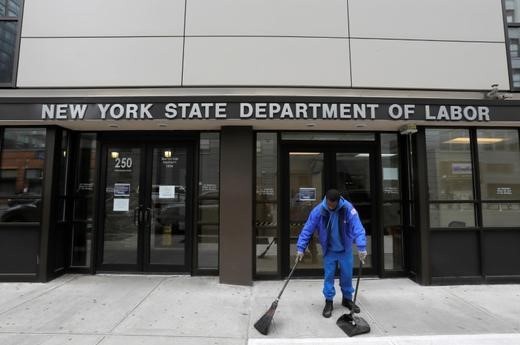US Unemployment Benefits: What Payment Options Do I Have?

Many Americans are now facing hardship and unemployment after the global pandemic coronavirus led to closures of schools and businesses.
The number of people filing for unemployment benefits jumps to two-and-a-half-year high last week. The virus has crippled many industries, upending the lives of the people.
Economists predict a recession by the second quarter---the country's first in 11 years. It's expected California will suffer the most with experts predicting a loss of 280,000 jobs in the state during the first quarter of 2021.
Read More:
- Walmart-Mexico's Elderly Employees Face Unemployment Amid COVID-19
- Mexico to Face Recession Due to Car Production Problems
- US-Mexico Border Has Closed Except for Essential Cargo
The government has passed economic relief packages intended to aid those who have lost their jobs due to COVID-19.
What is unemployment relief?
Unemployment benefits aim to give a temporary source of income to those who have lost their jobs or working hours through no fault of their own.
In light of the coronavirus outbreak and lockdown measures, lawmakers have expanded the list of people eligible to receive unemployment relief.
Workers who have fallen ill, have been quarantined, laid off, had hours reduced, and those who can't work to care for their children can now apply for unemployment compensation.
However, self-employed and independent contract workers such as rideshare drivers and freelancers are not eligible to receive unemployment relief.
In California, residents can collect unemployment or disability insurance. Their eligibility largely depends on their reason for leaving work. Unemployment benefits are given up to 26 weeks while disability insurance claims can be claimed for up to 52 weeks.
What is the process?
The process of applying and receiving an unemployment relief package varies across states. They follow a general pattern based on guidelines set by the Department of Labor.
Authorities advise individuals to file for a claim with the unemployment department after the last day of work. The department will ask for information such as income and the reason for unemployment. Some states allow individuals to file their claims online.
Authorities contact your last employers to verify all the information given which includes the reason for leaving work. The weekly benefit amount is then calculated based on past earnings.
In California, individuals who were sick or quarantined would generally receive $50 to $1,300 a week---less for those who have had their hours cut.
California's unemployment department has published additional guidelines you can read here.
We provide a variety of support services to individuals affected by #coronavirus in California. If you can't work, are being required to work less, or your child's school shuts down due to #COVID19, visit https://t.co/VvrBqUM9lT for more info. — EDD (@CA_EDD) March 13, 2020
How long does the process take?
Generally, it takes the department a couple of weeks before they release the money. However, it applies to cases where employers are quick to respond and verify the information given.
In worse cases where employers delay or details are missed on paperwork, the department could take several more weeks---or months--- before releasing the unemployment funds.
How will COVID-19 affect the processing of claims?
With coronavirus sweeping through the nation, the federal government has allowed states to handle claims with extra flexibility.
Individuals who have been sick or quarantined are required to present evidence provided by a healthcare professional who has treated them or advised them to observe self-isolation.
Individuals who have not been sick must be actively looking for work. The department will be requiring those filing for unemployment claims to contact potential employers.
How will the department deal with a spike in unemployment claims?
Loree Levy, California unemployment department's top spokesperson, said the unemployment department is working overtime to meet the influx of new claims.
Workers from other departments, as well as retirees, are also assigned on a shifting schedule to help process unemployment claims.
The department is looking at ways to allow staff to process claims remotely. They are also looking into hiring new staff members in a bid to provide unemployment benefits in a timely manner.
Subscribe to Latin Post!
Sign up for our free newsletter for the Latest coverage!
© 2025 Latin Post. All rights reserved. Do not reproduce without permission.















